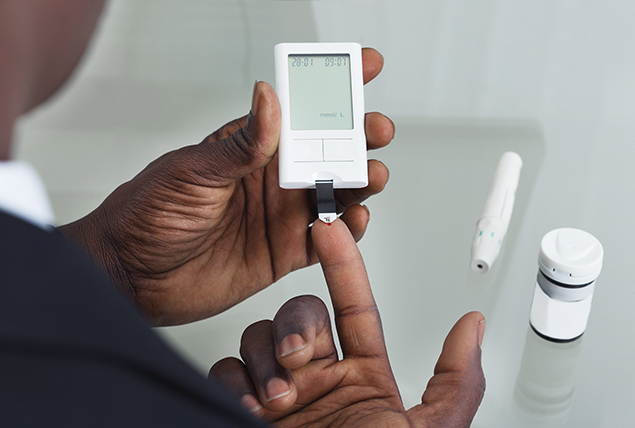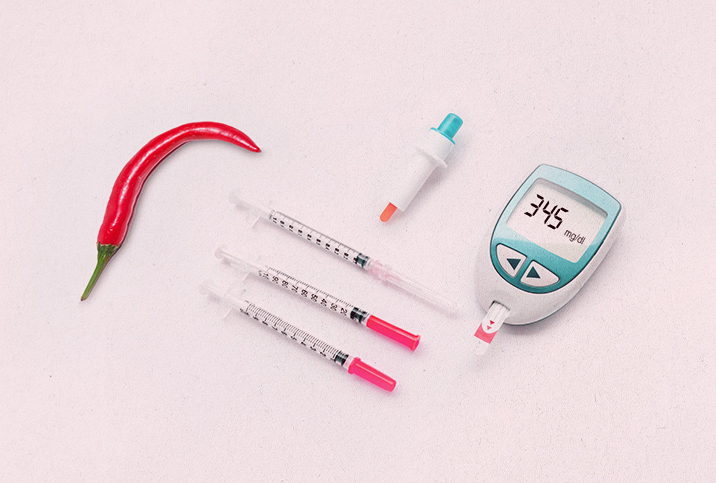Diabetic Men at Greater Risk of Balanitis, Foreskin Infections

Imagine going to the doctor's office to find out why the foreskin of your penis is infected and then leaving with a diabetes diagnosis.
It's "amazing" how many times Arthur L. Burnett, M.D., has seen that over the course of his nearly 30-year career as balanitis and diabetes often go hand in hand in his male patients.
"They say, 'No, I don't have it.' People don't even realize it," said Burnett, a professor of urology at Johns Hopkins School of Medicine in Baltimore. "We do the basic little tests and tell them they have prediabetes or diabetes."
Men with diabetes, especially poorly controlled diabetes, are more likely to have balanitis, an inflammation of the glans, or head, of the penis. Balanitis, which affects up to 11 percent of males, can present with redness, itching, burning or even a whitish discharge around the tip of the penis.
The tie between balanitis and diabetes
"The way I explain it to patients is the high blood sugars can be food for bacteria," said Neel Parekh, M.D., a men's fertility and sexual health specialist with Cleveland Clinic. "If you have high sugars, it can lead to an infection. Balanitis can be a bacterial or a fungal infection."
While balanitis affects both circumcised and uncircumcised men, uncircumcised men are more likely to encounter a balanitis infection. The smegma and irritation that occur beneath the foreskin can contribute to the development of balanitis. Balanoposthitis is the term for inflammation of both the head of the penis and the foreskin in uncircumcised men.
Parts of the body that are more peripheral, such as the fingers and toes, tend to not have the best blood circulation, Burnett explained. This makes them especially susceptible to the microvascular (relating to the smallest blood vessels) complications of diabetes.
"Certainly, the end of the penis is also an equally fragile area," Burnett said. "That part of the body that has a sensibility of poor circulation may have some moisture in the area, may have the opportunity for localized irritations, and then develop this inflammatory description of tenderness and inflamed reddening of the foreskin and head of the penis."
How to diagnose and cure balanitis
Balanitis can be diagnosed through a physical exam, Parekh explained, meaning he can tell what it is by looking at the head of the penis.
"If there's discharge, you can take a culture swab," he said. "But typically, I just treat it empirically."
Parekh's first-line treatment for balanitis is an antifungal ointment or steroid, or both. Patients apply it to the head of their penis twice daily until their symptoms resolve. Balanitis usually clears up in a week or two.
If patients don't respond to ointments, Parekh switches to an oral antibiotic or antifungal.
"Sometimes it can resolve on its own, but usually, if they're coming in to see me, it hasn't [resolved] or it's bothersome," he said. "Pain, burning or discharge—those are some of the symptoms guys might have. If they come in with those symptoms, then I'll go ahead and treat it."
About 1 in 10 patients have a recurrence of balanitis, according to research.
In rare cases, uncircumcised patients may elect to have an adult circumcision, which involves the surgical removal of the foreskin. Circumcisions are highly effective at preventing further episodes of balanitis.
Burnett said he generally does not see much recurrence if the man gets his diabetes under control. Uncircumcised men can improve their situation and retain the natural look of the foreskin if they manage their blood sugar levels, he explained.
"At the same time, there are going to be some out there who, despite their best care with diabetes control, may have to come back and do a full surgical intervention, and that would be a circumcision," he added.
Balanitis prevention and management in diabetic men
Personal hygiene is important for the prevention of balanitis infections. Parekh recommended keeping the genital area as dry as possible. Thoroughly dry the area after a shower or after working up a sweat.
Balanitis disproportionately affects obese men, so losing weight may help.
"Oftentimes, the penis gets buried because of all the excess fat in that area," Parekh said. "Even if the guy is circumcised, the head of the penis will essentially be buried in the fat, which is basically the same as being uncircumcised. And that makes it difficult for that area to dry properly."
Parekh asks men if they recently changed their soap in the shower. Antibacterial soaps can strip the good bacteria on the head of the penis and allow a fungus to grow, contributing to balanitis, he said.
For men with diabetes, Burnett said the "be-all and end-all" balanitis intervention is to get their diabetes under control. This can be achieved with insulin, oral medication and lifestyle modifications, such as diet and exercise.
"Largely, that will control it, [along with] maybe some dermatologic interventions just to kind of help bide the time, if you will, until you get your diabetes under control," he explained. "Fundamentally, if you don't do that, the rest is kind of hopeless."
It's not always easy for men to seek help, especially for something as personal and sensitive as a foreskin infection. A lot of people don't have a doctor they see regularly, so taking that first step isn't always easy. Video visits have become a viable option for most people, and more physicians have added them as a service.
Giddy telehealth makes it easy to get connected to a qualified healthcare professional who can help with a variety of conditions. Many of the professionals are available the same day.


















